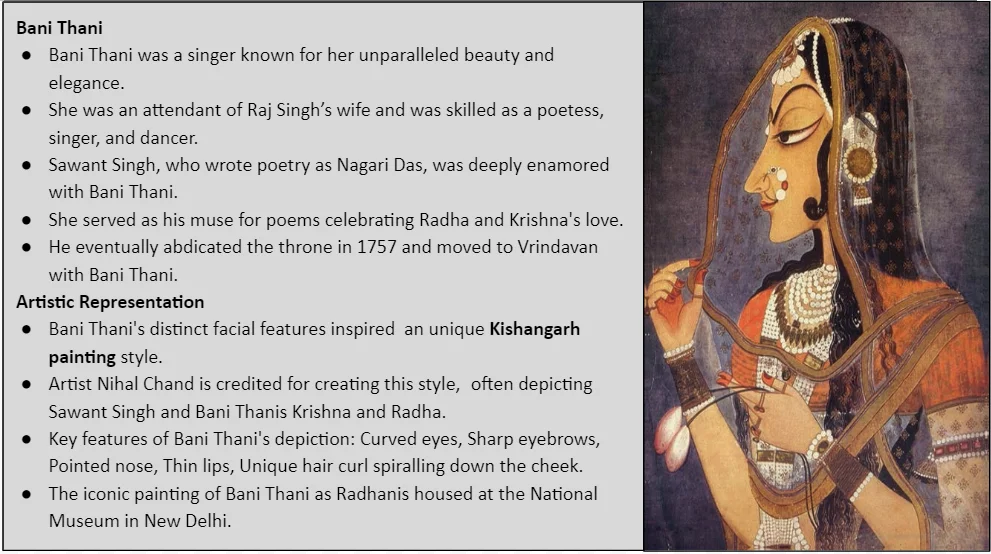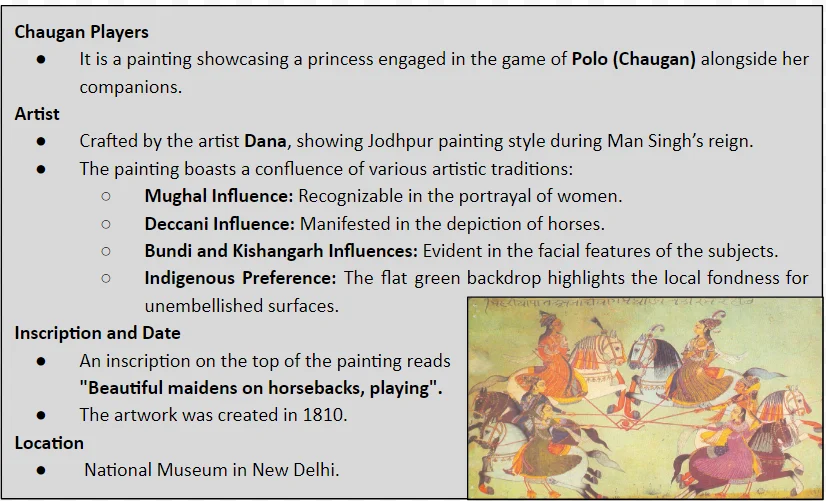![]() December 23, 2023
December 23, 2023
![]() 650
650
![]() 0
0
Kishangarh paintings are among the most stylised Rajasthani miniatures. They’re known for their refined elegance and unique facial depiction such as arched eyebrows, lotus petal-shaped eyes with a pinkish tinge, drooping eyelids, sharp slender nose, thin lips etc.
Kishangarh Painting Odyssey: Origins, Man Singh’s Patronage, and Distinctive Stylistic Flourish

Religious Influence: Kishangarh Painting of Vallabhacharya’s Cult and Radiant Krishna Lila Artistry

Notable Artists and Their Contributions: Kishangarh’s Radiant Love Stories in Paint, 1735–1757



Evolution under Prominent Rulers: Evolution of Jaipur School Under Prominent Rulers

Features of Jodhpur School of Painting: Tracing, Gold Accents, and Grand Formats
<div class="new-fform">
</div>
Latest Comments